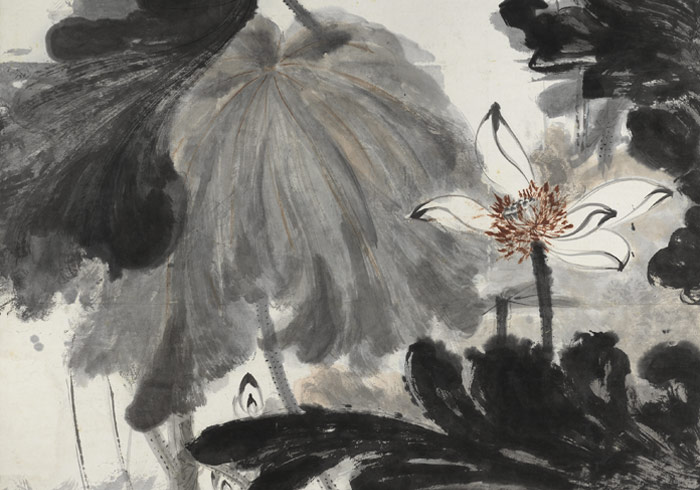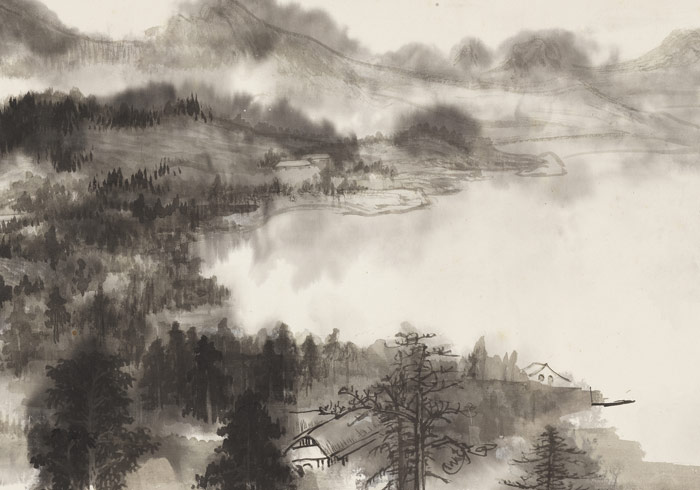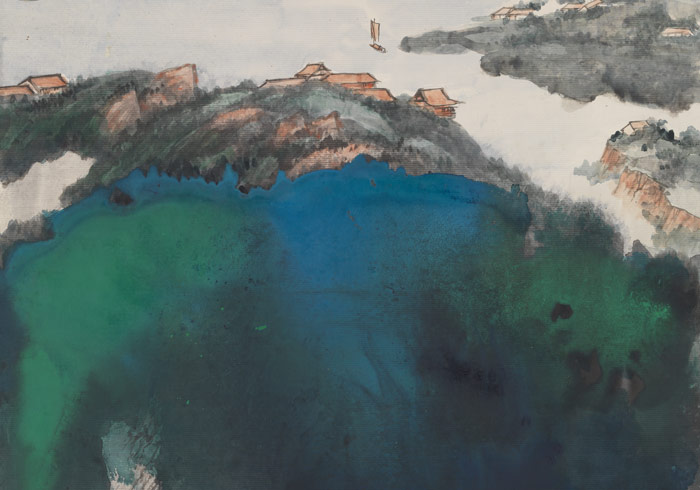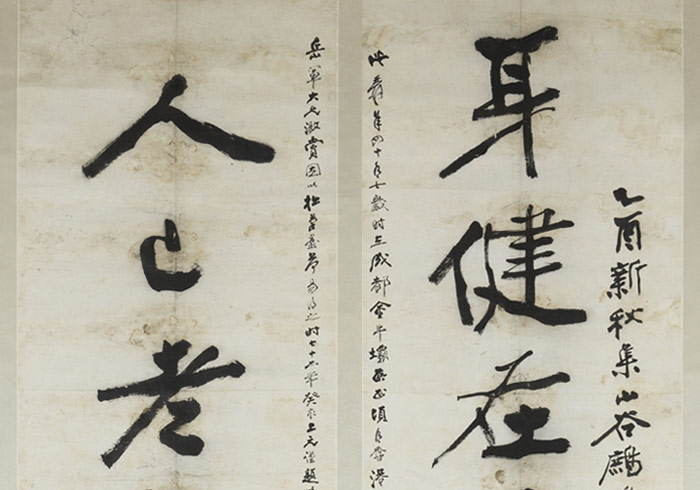Chang Dai-chien was not only an industrious genius in the arts, he also had great ambition and strove to make a name for himself in the art world. He emphasized that "painting is mainly to express beauty," teaching his students to "paint what is truly beautiful and to discard the parts that are not." His disciples recorded his idea about art as follows: "The creation of artistic forms must have grace and beauty, but at the same time be capable of being understood by people. I believe that only when spirit and form are complete can true beauty arise. And only then will it be accepted by the people, appreciated by both the refined and the popular alike." As to exactly how to recreate beauty on a two-dimensional surface as a visual form recognized by audiences, Chang Dai-chien mentioned that painting must exhibit three qualities: "depth," "size," and "luminosity." This means it needs to be something profound of idea, grand in manner, and appealing to the eye. This section of the exhibit takes a look at such large works as "Four Panels of Lotuses in Ink," "Lake Walen in Switzerland," and "Characters Collected from the Calligraphy of Huang Tingjian and Xin Jiaxuan," which reflect in concrete terms Chang Dai-chien's grand ideas about art and his lofty ambitions.
Four Panels of Lotuses in Ink
- Chang Dai-chien (1899-1983), Republican period
- Hanging scroll, ink and colors on paper, 359.6 x 148.6 cm
This set of paintings, ranked as a Significant Historic Artifact, is from the collection of the National Museum of History.
Lake Walen in Switzerland
- Chang Dai-chien (1899-1983), Republican period
- Handscroll, ink and light colors on paper, 30.6 x 129.2 cm
This painting is from the collection of the National Museum of History.
Vast Shoals and Distant Mountains
- Chang Dai-chien (1899-1983), Republican period
- Hanging scroll, ink and colors on paper, 194.3 x 103 cm
Characters Collected from the Calligraphy of Huang Tingjian and Xin Jiaxuan
- Chang Dai-chien (1899-1983), Republican period
- Hanging scroll, ink on paper, 359.5 x 70.3 cm
Mr. Chang Chi-cheng donated this monumental couplet to the National Palace Museum.




